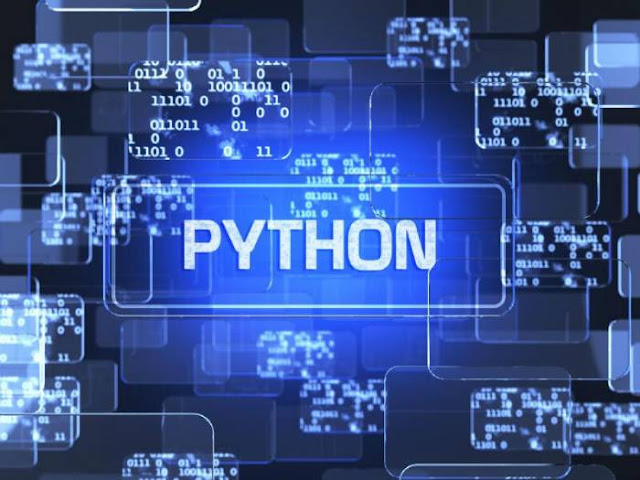Is Python a programming language or coding?
Python is a programming language, not just a form of coding. In the world of computer science and software development, the terms "programming" and "coding" are often used interchangeably, but they do have distinct meanings. Python is a adaptable and widely-used programming language that allows developers to write code to create software, automate tasks, and solve various computational problems. I will explore the differences between programming and coding, delve into the characteristics of Python as a programming language, and discuss its significance in the field of technology.
Programming vs. Coding:
To understand the distinction between programming and
coding, it's essential to grasp the fundamental concepts of each term.
Coding:
Coding refers to the process of inscription code in a
specific programming language to perform a set of predefined tasks. It involves
translating human-readable instructions into a machine-readable format. Coders
typically focus on implementing algorithms and logic to achieve a specific
goal. Coding can be thought of as the act of writing individual lines or blocks
of code to create functionality within a program or application.
Programming:
Programming is a broader concept that encompasses not only
writing code but also designing, planning, and maintaining software. It
involves the creative process of solving problems, designing algorithms, and
structuring code to build complex systems. Programmers often take a holistic
approach, considering the architecture of a program, its scalability, and its
maintainability in addition to writing code.
Python as a Programming Language:
Python, often described as a "high-level"
programming language, is a powerful and nifty tool for developers. It was produced
by Guido van Rossum and first released in 1991. Python is known for its
readability, simplicity, and flexibility, making it an excellent choice for
both beginners and experienced programmers.
1. Readability:
One of Python's standout features is its readability. The
language was designed with a focus on clean and easily understandable code.
Python uses indentation and whitespace to define the structure of the code,
which enforces a consistent and clear coding style. This makes Python code
visually appealing and easier to maintain, especially for larger projects.
2. Versatility:
Python is a versatile programming dialectal that can be used
for a wide range of applications. It is commonly used in web development, data
analysis, artificial intelligence, scientific computing, and automation.
Python's extensive library support and third-party packages make it well-suited
for various tasks, from web development using frameworks like Django and Flask
to data analysis with libraries like Pandas and NumPy.
3. Dynamic Typing:
Python is dynamically typed, which means that variable types
are determined at runtime, not during declaration. This feature provides
flexibility and simplifies the coding process, as you don't need to specify
variable types explicitly. However, it also requires careful handling to avoid
runtime errors.
4. Interpreted Language:
Python is an took language, which means that code is
executed line by line by the Python interpreter. This allows for quick
development and testing, as you can see the results of your code immediately.
However, interpreted languages are generally slower than compiled languages,
but for many applications, Python's performance is sufficient.
5. Strong Community and Ecosystem:
Python boasts a large and active public of developers. This
community has contributed to the creation of numerous libraries, frameworks,
and tools, making Python an even more powerful language. The Python Package
Index (PyPI) is a repository of over 300,000 Python packages, providing
solutions for a wide array of tasks.
Significance of Python:
Python's significance in the world of technology cannot be
overstated. It has gained immense popularity and has become one of the top
programming languages for several reasons.
1. Accessibility:
Python's simplicity and readability make it accessible to
beginners, which has led to its adoption in educational settings. It is often
used as a first programming language for individuals learning to code, as it
helps them grasp fundamental programming concepts without the complexities of
low-level languages.
2. Rapid Development:
Python allows for rapid development, making it a favored
choice for prototyping and quick iterations. This speed is essential in today's
fast-paced software development environment.
3. Data Science and Machine Learning:
Python has converted the de facto language for data science
and machine learning. Libraries like NumPy, Pandas, Matplotlib, and
scikit-learn make it the preferred choice for data analysis and modeling.
Frameworks like TensorFlow and PyTorch are popular for deep learning and
artificial intelligence research.
4. Web Development:
Python is extensively used in web development. Frameworks
like Django and Flask simplify the process of building web applications.
Python's versatility allows developers to work on both the server-side and
client-side, further enhancing its utility in web development.
5. Automation and Scripting:
Python's ease of use and cross-platform compatibility make
it a go-to choice for automation and scripting. From simple automation tasks to
complex scripts, Python is widely employed to streamline processes and enhance
productivity.
6. Community and Support:
Python's large and enthusiastic community continuously
develops and maintains libraries, frameworks, and tools. This vibrant ecosystem
ensures that Python remains up-to-date and relevant in an ever-evolving
technology landscape.
7. Scalability:
Python is suitable for both small and large-scale projects.
While it may not be as performant as some lower-level languages, it can be
optimized for scalability when necessary.
Conclusion
Python is unquestionably a programming language, not just a form of coding. It is celebrated for its readability, versatility, and wide-ranging applications. Python's accessibility, rapid development capabilities, and dominance in data science and web development make it a vital tool in the technology industry. Its significance is reflected in its large and active community, extensive ecosystem, and continued relevance in an ever-evolving field. Whether you're a beginner or an experienced programmer, Python offers a valuable and enjoyable platform for turning ideas into functional software.
